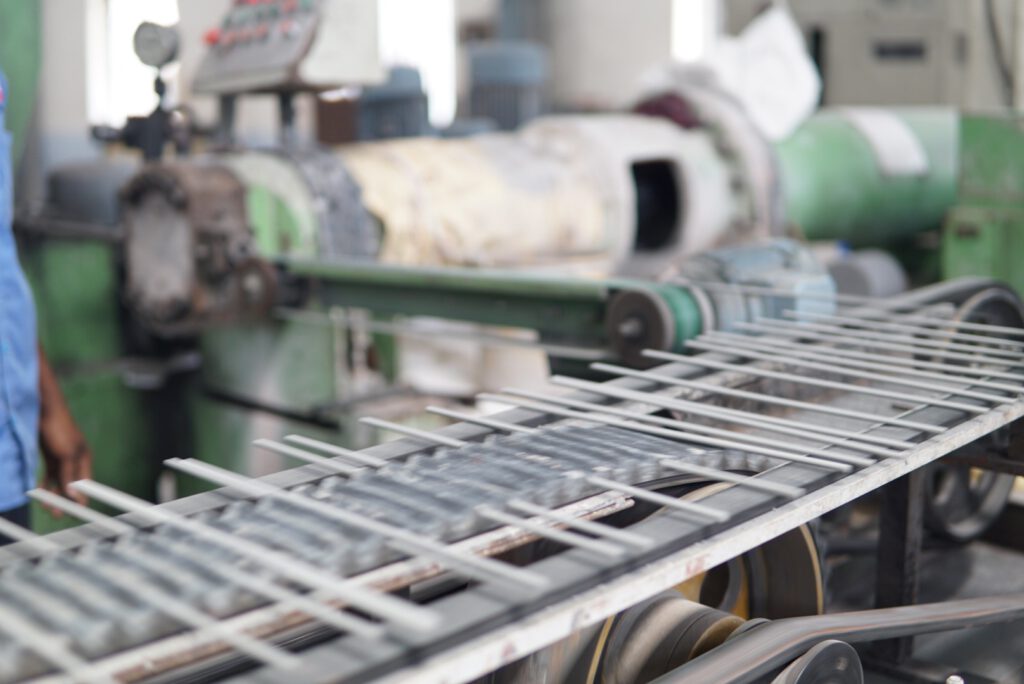Carbon steel and stainless steel are commonly used materials in the fabrication and construction industries.
Both materials can be welded using various welding processes, including shielded metal arc welding (SMAW), flux-cored arc welding (FCAW), and gas metal arc welding (GMAW). However, different types of welding electrodes are used for these materials due to their unique properties and characteristics.
In this article, we will discuss the differences between carbon steel and stainless steel welding electrodes and their respective properties, applications, and limitations.
Carbon Steel Welding Electrodes
Carbon steel welding electrodes are used for welding low-carbon steel and mild steel. These electrodes are made of a low-carbon steel core wire coated with a flux layer. The flux serves several purposes, including providing shielding from the atmosphere, creating slag to protect the weld, and aiding in removing impurities.
Carbon steel welding electrodes are available in various diameters and coatings, depending on the specific application. For example, 6010 electrodes are used for penetration on dirty or rusty steel, while 7018 electrodes are used for general-purpose welding and provide a good bead appearance.
Some of the advantages of using carbon steel welding electrodes include the following:
- High resistance to cracking
- Good mechanical properties
- Low cost
However, carbon steel welding electrodes have a few limitations, including:
- Limited corrosion resistance
- Limited resistance to high temperatures
- Limited resistance to wear and abrasion

Stainless Steel Welding Electrodes
Stainless steel welding electrodes are used for welding stainless steel and other corrosion-resistant alloys. These electrodes are made of a stainless steel core wire coated with a flux layer. The flux helps to provide shielding from the atmosphere and creates slag to protect the weld.
Stainless steel welding electrodes are available in various diameters and coatings, depending on the specific application. For example, 308L electrodes are used for welding austenitic stainless steel, while 309L electrodes are used for welding dissimilar metals.
Some of the advantages of using stainless steel welding electrodes include the following:
- Excellent corrosion resistance
- Good resistance to high temperatures
- Good resistance to wear and abrasion
However, stainless steel welding electrodes have a few limitations, including:
- Higher cost compared to carbon steel electrodes
- Limited resistance to impact
- Prone to hot cracking
Ready to make the right choice for your welding electrode needs? Learn the differences between carbon steel and stainless steel welding electrodes with our Welding Electrode Materials 101 guide today!
Comparison Table
Below is a comparison table summarizing the key differences between carbon steel and stainless steel welding electrodes:
| Property | Carbon Steel | Stainless Steel |
|---|---|---|
| Composition | Low carbon | Stainless steel |
| Flux Coating | Yes | Yes |
| Resistance to corrosion | Low | High |
| Resistance to high temp | Low | High |
| Resistance to wear/abrasion | Low | High |
| Resistance to impact | High | Low |
| Cost | Low | High |

Conclusion
In conclusion, carbon steel and stainless steel welding electrodes are used for different applications due to their unique properties and characteristics.
Carbon steel electrodes are suitable for welding low-carbon and mild steel and are known for their high resistance to cracking and good mechanical properties. However, they have limited corrosion resistance and are unsuitable for high-temperature and wear/abrasion applications.
On the other hand, stainless steel electrodes are suitable for welding stainless steel and other corrosion-resistant alloys. They are known for their excellent corrosion resistance and good resistance to high temperatures and wear/abrasion.
